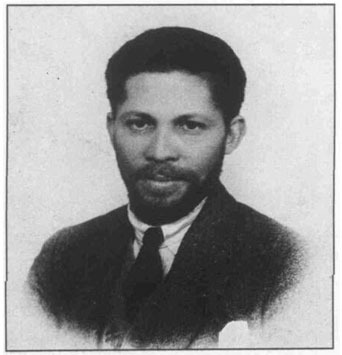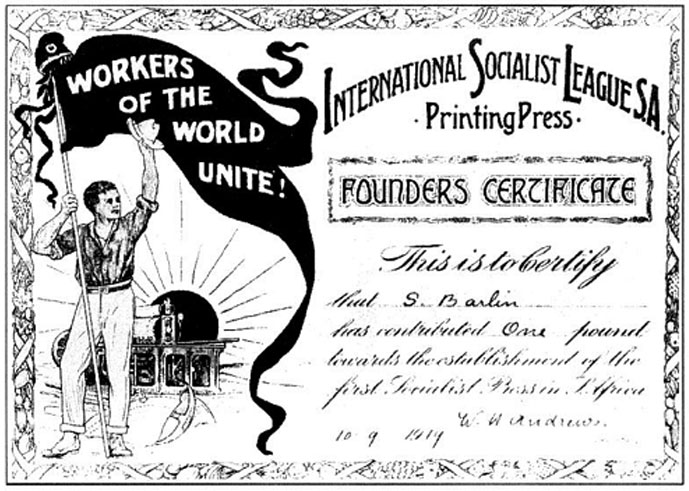The International Socialist League (ISL) was formed in September 1915. It was created by a progressive faction of the South African Labour Party (SALP) as a reaction to the party’s support for South Africa’s participation in the First World War. On 22 September the ISL was formed with W. H Andrews as chairman, J.A. Clark as vice-chairman, G. Weinstock as treasurer, and David Ivon Jones as secretary. S. P. Bunting was also a popular founding member of the organisation.
Many socialists in South Africa, in keeping with the position of socialists elsewhere in the world, opposed the War as they saw it as being fought over purely imperialist interests. Before splitting from the SALP, socialists and other progressives began the War on War League. Members of the League decided to form a breakaway organisation when it became clear that pressure from within would not change the Labour Party’s position on the War. Similar splits over support for the First World War occurred in socialist organisations and other left parties throughout the world.
Over and above their position on the War, some of the SAPL members who split to form ISL also held radically different positions on a number of other important issues. The most notable of which was the race question. The SAPL was an all-white party and had established a deeply racist tradition amongst “White Labour”. While this tradition would be carried into the ISL, it would also be openly contested there. Certain socialists and progressives saw the importance of organising the growing Black working class. However, amongst this group there was still debate over the role of the Black working class in the class struggle. Some thought it important to educate and organise Black workers purely as a means to support the already militant vanguard of White workers in their struggle to overturn capitalism. Others, like S. P. Bunting for example, recognised that it would in fact be the Black working class that would be the vanguard of any forthcoming proletarian revolution.
 Johnny Gomas of the International Socialist League and Clothing Workers Industrial Union Image source
Johnny Gomas of the International Socialist League and Clothing Workers Industrial Union Image source
Notwithstanding the fact that the deep-rooted traditions of “White Labour” were brought into the ISL, from its inception in 1915 the organisation broadly committed itself to the struggle of the working class both Black and White. At their first congress in 1916 the ISL adopted a petition put forward by Bunting that demanded political, economic and social rights for Black South Africans. In september 1917 the ISL helped set up the Industrial Workers of Africa (IWA) - the first trade union for Black workers in South Africa. By 1920 the IWA was absorbed into the Industrial and Commercial Workers’ Union (ICU) which went on to become the biggest and most powerful union in Southern Africa over the next decade.
The ISL was a vocal supporter of the 1917 Bolshevik Revolution (the October Revolution) in Russia. In an article in The International, the mouthpiece of the progressive faction of the SAPL and later the ISL, Ivon Jones insisted that: “we must educate the people in the principles of the Russian Revolution [i] In January 1921 the ISL agreed to join the Communist International (the Comintern) - a worldwide organisation founded by Vladimir Lenin and the leadership of the Bolshevik party. Ivon Jones was elected to the Executive Committee of the Communist International (ECCI) in June that year as a representative of South Africa. By July 1921 the ISL merged with a number of other organisations to form the Communist Party of South Africa (CPSA), in order to officially become an affiliate of the Comintern.
 A founders or membership certificate from the International Socialist League of South Africa Image source
A founders or membership certificate from the International Socialist League of South Africa Image source
Endnotes
[1] David Simelane. “The International Socialist League”, published by Umkhonto we Sizwe (1981) http://www.sahistory.org.za/archive/the-international-socialist-league ↵